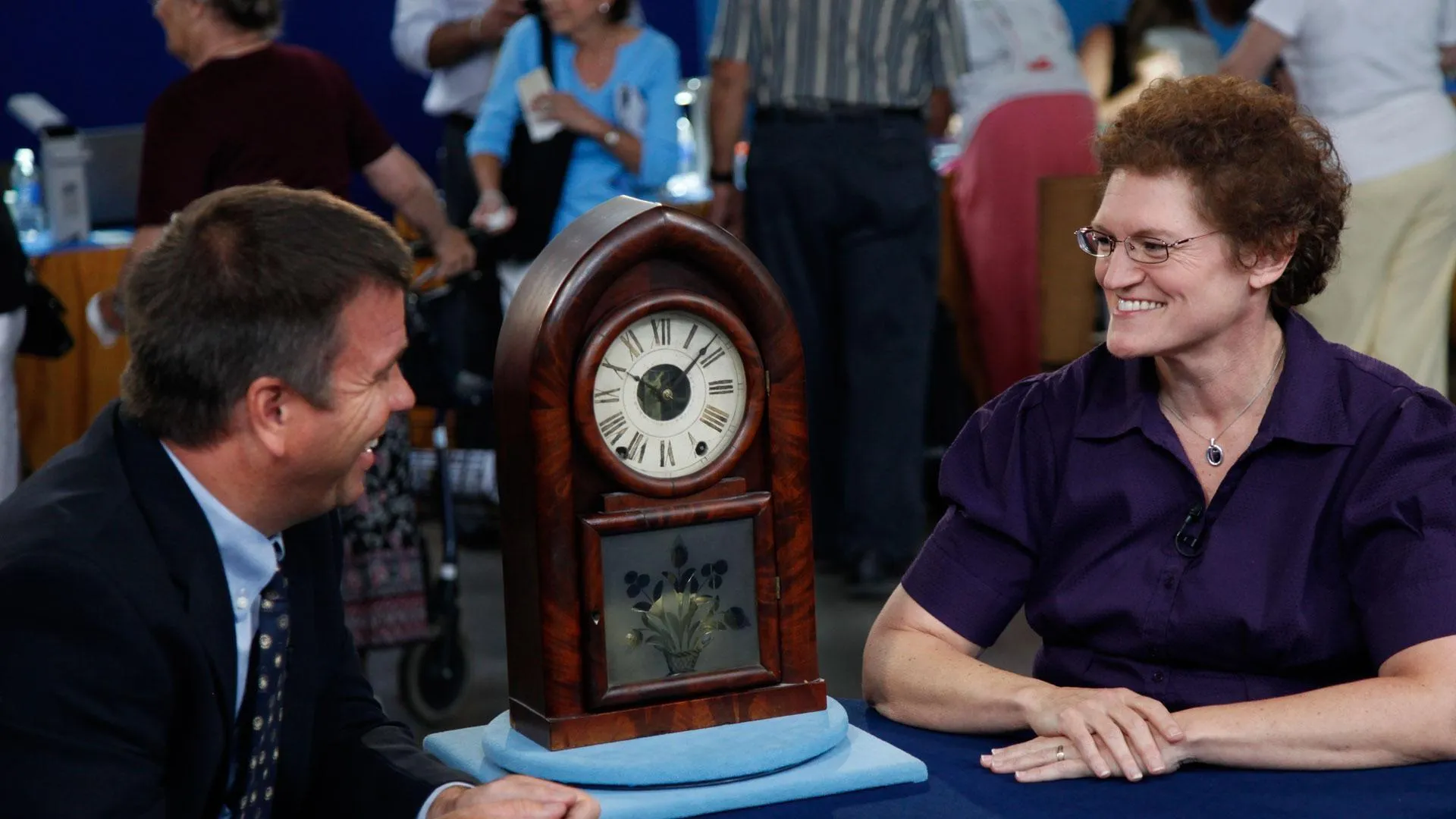GUEST: I brought in a clock that belonged to my husband's family. His mother was given the clock in the 1930s by a neighbor, and it spent decades in the dining room of my husband's home. And about 15 years ago, we went back to see my father-in-law and he asked my husband if he would like to have the clock. And he did, so it's been in our home since that time.
APPRAISER: Do you use the clock?
GUEST: Yes, we used it up until quite recently. However, the key that winds the mechanism is worn and no longer will wind it. So, since that time, it's just been a decorative object in our home. And we do have my mother's picture beside it because she was the one who was given the clock.
APPRAISER: Well, this clock is called a beehive clock, and it gets its name from the shape of the case. The case is veneered in mahogany. It became a very, very popular design. This particular example is one of the most special examples that you'll find because it represents the transformation from weight-driven clocks to clocks that are powered by springs. And these particular springs in this clock were the first ones that were produced successfully, commercially, in America. And that all happened around 1834 or 1838. The person that made this clock, his name was E.C. Brewster and he worked in Bristol, Connecticut. And prior to this, if you wanted a spring-driven clock, an American clockmaker had to buy springs from overseas. And they were very, very expensive. So, the solution for that was American clockmaker companies decided we would make weight-driven clocks. The reason why tall case clocks, or grandfather clocks, are tall is because they need that amount of drop in order to get eight days of run out of the clock before the weights hit the floor or the bottom of the case and the clock stops. So here we have a clock, one of the first clocks ever produced with what are called coil springs made in America and then sold successfully. I think you can safely say there's less than 50 of these known today. And this particular clock is in outstanding condition. Today, in our economy, the standard beehive clock would sell anywhere from about $400 to $600. This clock, in an auction setting, would easily sell in the $3,000 to $3,500 price category.
GUEST: Very nice. Very nice, thank you.



